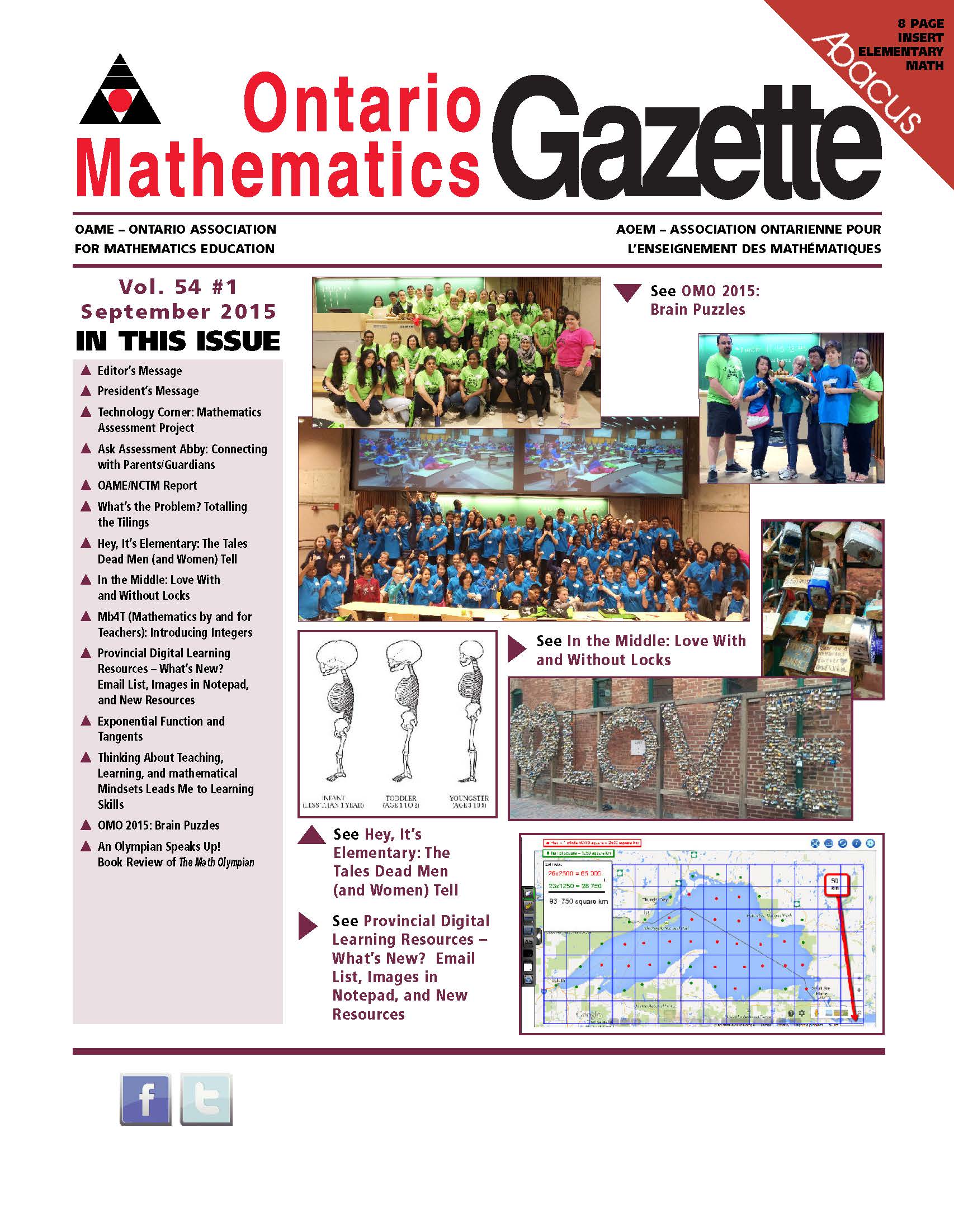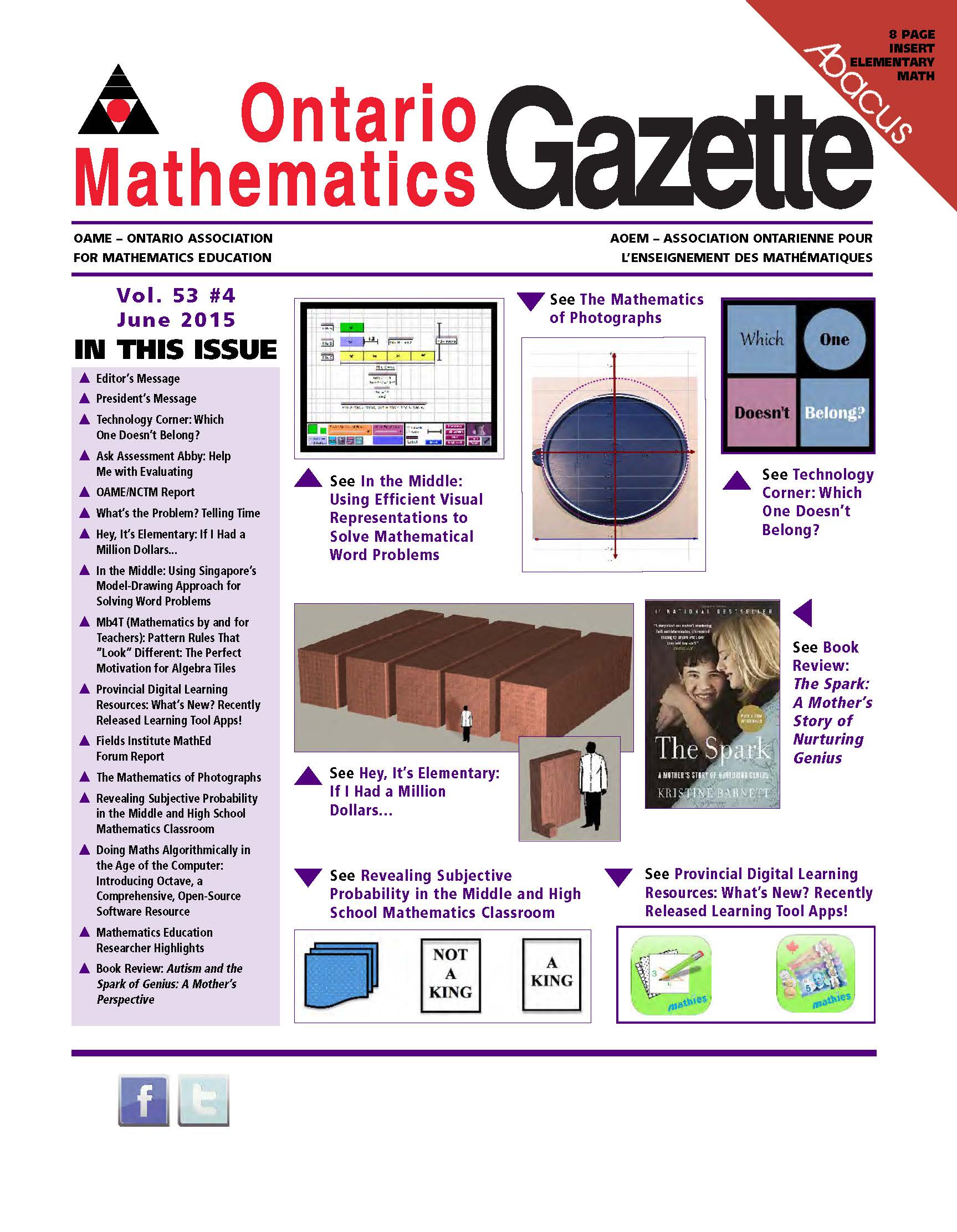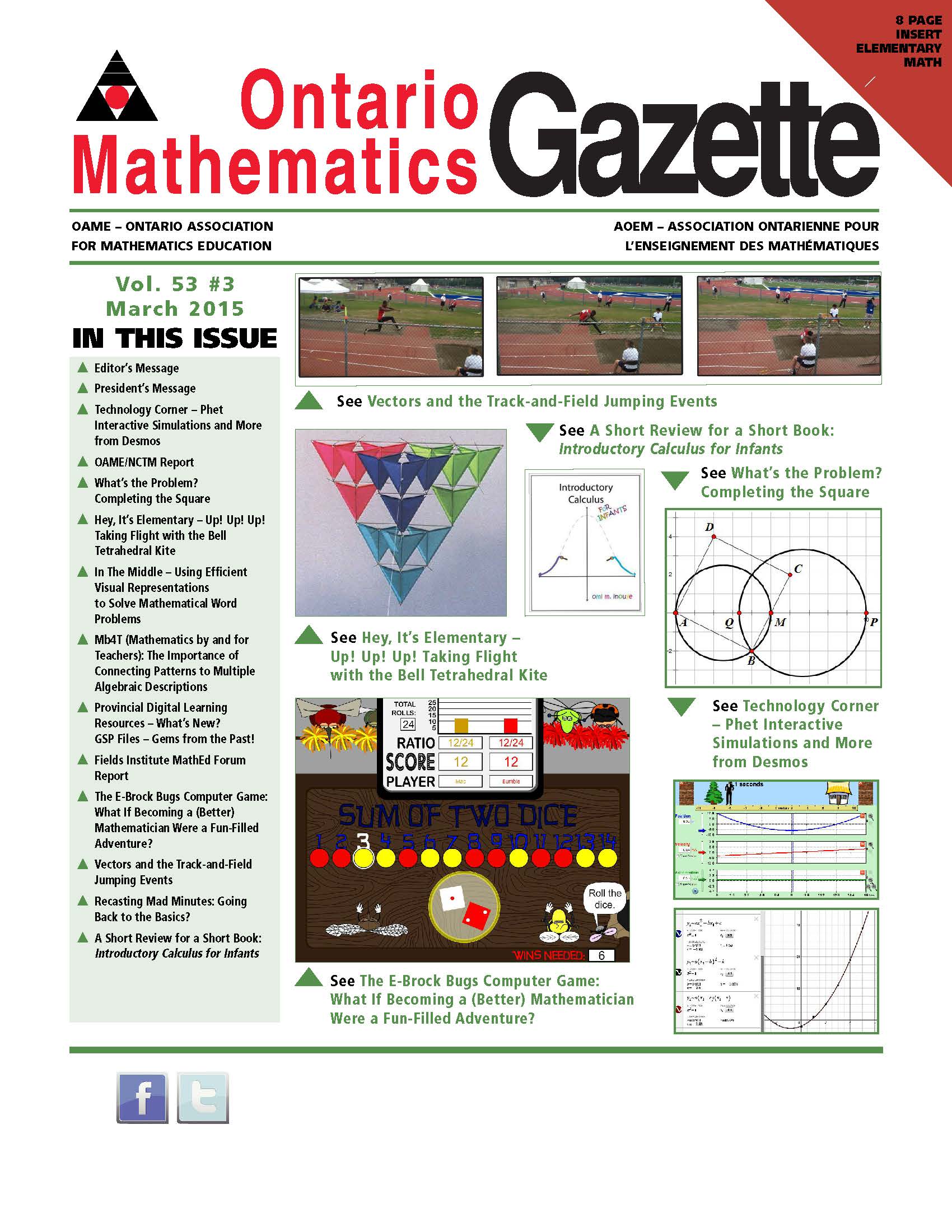 OAME Gazette Volume 54 Number 1 released and includes four articles, nine regular columns, the Abacus insert, and several special features.
OAME Gazette Volume 54 Number 1 released and includes four articles, nine regular columns, the Abacus insert, and several special features.
In his article Thinking about Teaching, Learning, and Mathematical Mindsets Leads Me to Learning Skills, author Jamie Pyper discusses growth mindsets and habits of mind, and also highlights a learning skills rubric that he has developed for student assessment. OAME Past-President, Paul Alves, and co-author Judy Mendaglio provide the reader with details regarding the history and format of the Ontario Mathematics Olympiad (OMO). Further, they report on local branch traditions associated with the hosting of the OMO qualification events, as shared by member representatives at the OAME June board meeting. In terms of the most recent OMO 2015 competition, co-chairs Melissa Black and Linda LoFaro contribute a full report, including photos of the organizing team, candid student shots, and the winning student team. And finally, in Meth Devendra’s Exponential Function and Tangents, he demonstrates how a single common tangent line to two given functions can be achieved, using several distinct examples.
Regular columns include the following highlights: OAME President, Tim Sibbald (President’s Message) shares his inaugural President’s Message; Assessment Abby (eponymous) answers a submitted question regarding teachers’ communication with parents/guardians; Mary Bourassa (Technology Corner) highlights the online resource known as the Mathematics Assessment Project (MAP); Carly Ziniuk (replacing Mirela Ciobanu as a guest columnist for the In the Middle column—thank you Mirela, and welcome aboard Carly!) presents a sample math investigation focusing on the Pont des Arts pedestrian bridge in Paris which has garnered international attention regarding the symbolic and controversial love padlocks placed on it’s side rails; and Greg Clarke, Agnes Grafton, Ross Isenegger, and Markus Wolski (Provincial Digital Learning Resources) discuss email list notifications, images in Notepad, partitioning sets tool, and wiki supports.
Lynda Colgan (Hey, It’s Elementary) delves into forensic anthropology and how mathematics is used by experts to identify bone remains; Shawn Godin (What’s the Problem?) elaborates on the previous tiling problem and poses a new puzzle regarding buried pirate treasure; Ann Kajander (MB4T) looks at how to introduce students to integers; and Todd Romiens (OAME/NCTM Report) shares some ideas around stimulating a child’s curiosity and also how parents/guardians can be involved in their child’s math learning. As usual, this issue also features the rich contribution of ideas for elementary math teaching as found in the Abacus insert, co-edited by Mary Lou Kestell and Kathy Kubota-Zarivnij, and focusing here on equivalence and relational thinking.
Volume 54 Issue 1 also includes several special features: (i) a review by Tim Sibbald of Richard Hoshino’s book, The Math Olympian (2015); (ii) two Ontario mathematics education researcher profile highlights; and, (iii) the remaining Canadian mathematics education researcher excerpts from within Lerman’s Encyclopedia of Mathematics Education (2014).




